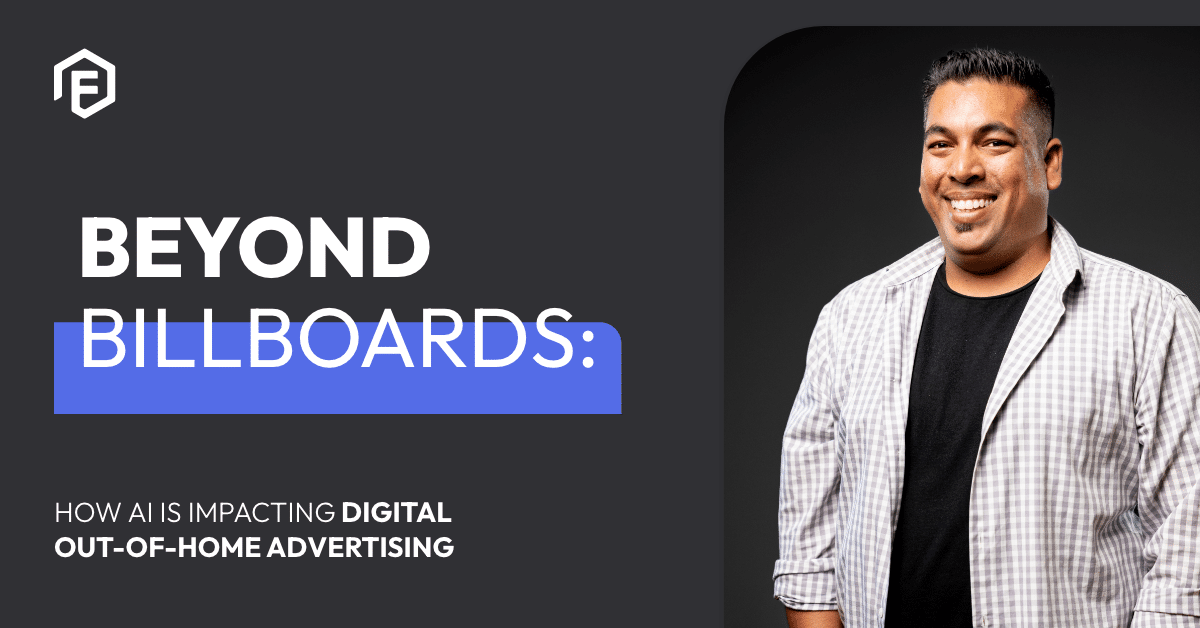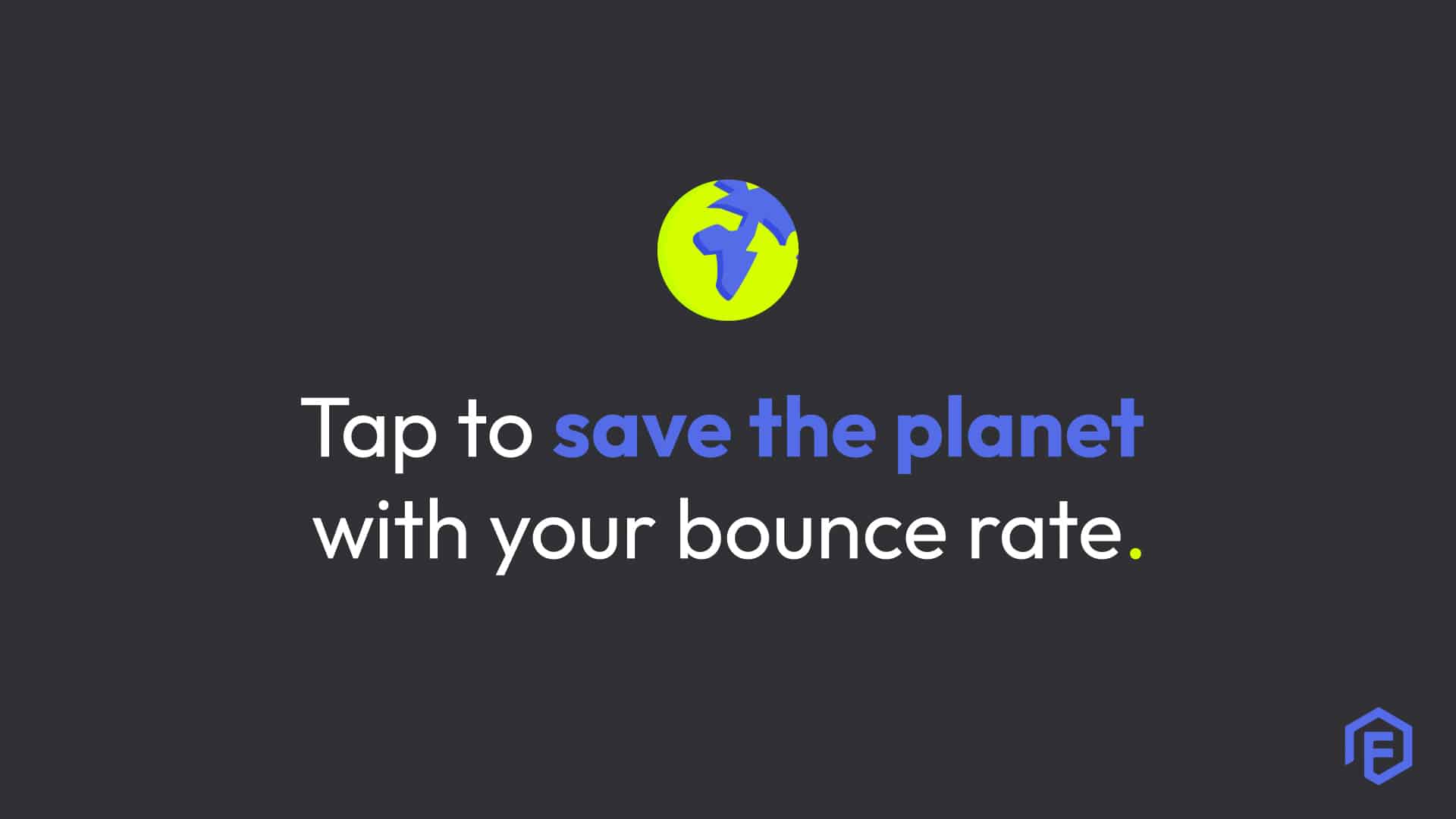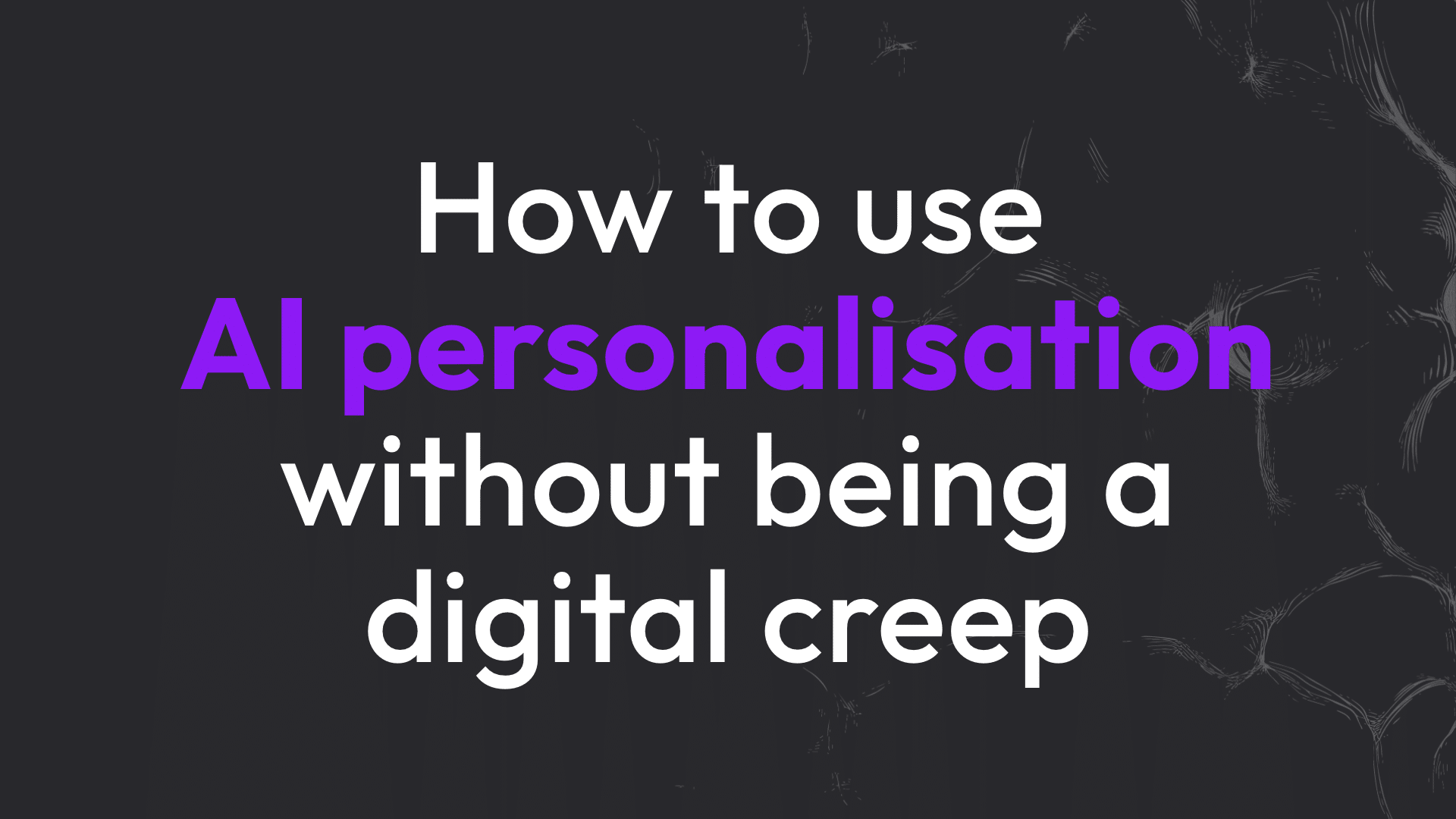There’s a fine line between “We noticed you like oat milk, so we stocked it at your local shop” and “We saw you crying at 3:17am last Thursday and thought you’d enjoy this discount on weighted blankets.”
Welcome to the golden age of AI-powered marketing, where the phrase personalised experiences sounds charming right up until it isn’t. For marketers, developers, and data scientists, the challenge isn’t whether we can use AI to serve hyper-relevant content in real time – it’s whether we can do it without making the customer feel like they’re being watched through a two-way mirror.
AI personalisation is undeniably powerful. It sifts through historical data faster than gossip can go from “I probably shouldn’t say this” to “But here’s what I heard.” It can automate, segment, and target with algorithmic elegance. But if you’re not careful, it can also come off as nosy, over-familiar, or just plain unsettling – like that one person who remembers your birth time but mispronounces your name.
First, Let’s Clarify the Buzzwords (Before They Become Buzzsaws)
Personalisation is when content is tailored to you based on some known information, say, your location, past purchases, or browsing history. You buy hiking boots, and next week you’re served an ad for waterproof socks. Logical. Mildly helpful. No alarm bells.
Hyper-personalisation, however, is AI’s full orchestral performance. It uses real-time data, layered with historical behavioural patterns, to deliver experiences so specific they make fortune tellers look vague.
A textbook example? Spotify’s Discover Weekly. It doesn’t just show you “more of the same.” It studies when and how you listen, what you skip, what you linger on, what genre suits your midweek slump, and whether you need 120 bpm on a Monday morning. That’s hyper-personalisation done with grace: clever, seamless, and weirdly accurate.
So, How Can AI Be Used for Personalisation (Without Triggering Existential Dread)?
Glad you asked. AI can vastly improve customer experiences in ways that feel helpful rather than haunting. Like:
Predictive recommendations
The system anticipates what users might need next based on patterns in their behaviour. Great when it helps you reorder contact lenses. Less great when it predicts your breakup before you do.
Dynamic content
Websites and emails that shift tone, imagery, or product placements depending on who’s visiting. Done right, it feels like the brand just “gets you.” Done wrong, it feels like the website is peeking through your curtains.
Conversational interfaces
Chatbots that finally understand nuance. The ones that know “where’s my order?” and “why is my parcel doing a 10-day road trip across the country?” aren’t the same question.
Behavioural nudges
Real-time responses to user behaviour: lingering on a product page, abandoning a cart, scrolling through every photo except the one that explains what the thing is. These are moments AI can use to gently guide – keyword: gently.
Don’t Be a Digital Cling-on
There’s a difference between being helpful and being clingy. For instance, that jumper you looked at once during a moment of weakness should not follow you across platforms for the next 17 days like it’s auditioning for a role in your nightmares.
Yes, AI allows us to act quickly – sometimes too quickly. The urge to automate everything from re-engagement emails to behavioural triggers is understandable. But just because AI can respond in real time doesn’t mean it has the right social timing.
Consider frequency. Consider tone. Consider whether it’s really appropriate to send three emails, two push notifications, and a “We miss you” message about an abandoned shopping cart that contained nothing but a novelty mug.
Hyper-personalisation should feel like a good concierge – attentive, discreet, and useful – not like a digital alarm bell that goes off every time someone blinks.
Don’t Confuse More Data with Better Experience
The temptation to hoard data is strong. But more data doesn’t necessarily equal deeper insight. In fact, it can just make you nosier with better tools.
A few best practices for the less-creepy road to AI-powered marketing:
- Set parameters. Just because the algorithm can personalise to the level of “your phone battery is low” doesn’t mean it should.
- Include human oversight. AI needs humans to ensure that outputs aren’t riddled with unconscious bias or alarming logic leaps.
- Audit tone regularly. A campaign that sounded cheeky in your brainstorm can read as deranged when it lands in someone’s inbox at 11pm.
- Be honest about data use. Customers appreciate clarity. If they know what data you’re using and why, they’re more likely to tolerate your AI’s enthusiastic guesses.
- Focus on delight, not domination. A well-timed offer, a tailored playlist, or a smart suggestion can feel like magic. A relentless assault of “YOU MIGHT ALSO LIKE…”? Less so.
So, What’s the Difference between Personalisation and Hyper-Personalisation Again?
In short: it’s about depth, speed, and precision.
- Personalisation = “We see you’re into sci-fi books, here’s more sci-fi.”
- Hyper-personalisation = “You read dystopian fiction late at night, typically with authors under 40. Here’s a newly released novel we think you’ll devour in one sitting. By the way, it’s 20% off until midnight.”
Hyper-personalisation requires AI to work in real time, analysing multiple data streams – demographics, behaviour, preferences, device usage, even local weather – and weaving those into moments that feel tailored, not templated.
The risk, of course, is that these moments can tip into uncanny territory – especially when they appear too quickly, too frequently, or too specifically.
Closing Thoughts (Before the Chatbot Interrupts Again)
AI isn’t inherently creepy. It’s just remarkably good at being efficient, and when efficiency collides with intimacy, it can feel like surveillance.
As digital marketers, we’re not just data handlers – we’re experience designers. Our job isn’t to predict people’s every move. It’s to know when to make a smart suggestion and when to leave them blissfully alone.
Be thoughtful. Be subtle. And for the love of all things pixelated, resist the urge to send that fifth email.
P.S. Don’t forget to share this article.
Flume is an independent, full-service digital marketing agency providing services that include SEO, web design and development, public relations, media buying, client service, UX/UI and creative production. For more information visit www.flume.co.za or email us at [email protected] to say, well, “hello”.
-
Frequently Asked Questions
-
1. Why are people using TikTok as a search engine instead of Google?
- TikTok has become a search engine for many, especially younger generations, because it delivers authentic, user-generated content through short-form videos. Unlike Google’s webpage indexing, TikTok offers answers rooted in lived experiences, complete with visuals and personal commentary, making it feel more relatable and trustworthy for queries like tutorials, reviews, or recommendations.
-
2. How is AI changing the way we search?
- AI-powered search tools like ChatGPT and Perplexity provide direct, synthesised answers instead of lists of links. They act like a concierge, understanding user intent and delivering contextualised responses, which shifts search from link-based discovery to instant answer delivery, challenging traditional SEO strategies.
-
3. Is Google still relevant with the rise of TikTok and AI search tools?
- Yes, Google remains a powerhouse for research-heavy and transactional queries, backed by decades of data and robust infrastructure. However, it’s adapting to competition from social platforms like TikTok and AI tools by introducing features like Search Generative Experience (SGE) to provide direct answers.
-
4. What does the shift to social and AI search mean for digital marketers?
Marketers must adopt multi-platform, multi-format strategies. This includes creating answer-focused content for AI, producing short-form videos for platforms like TikTok, leveraging user-generated content for trust, and optimizing for clear, natural language to align with AI discovery.
-
5. Can we trust AI search engines to provide accurate information?
- AI search engines are improving but can still produce inaccuracies or overconfident responses, sometimes referred to as “hallucinations.” While they’re powerful for quick, synthesised answers, users should verify critical information, especially for complex or sensitive queries.



